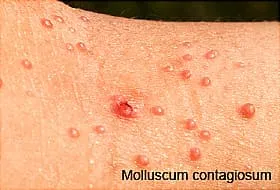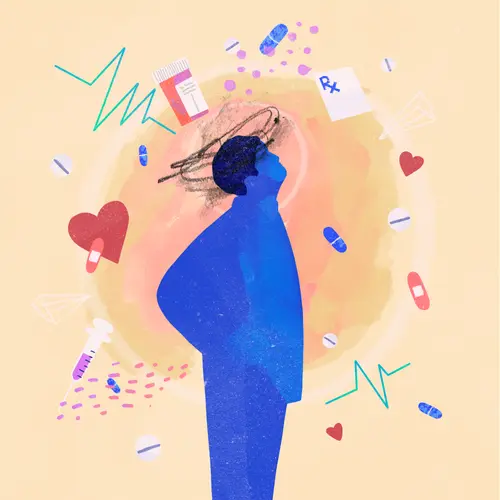What Is an HIV Rash?
An HIV rash is irritated skin that affects people who have the virus. It can be itchy, red or purple, or painful.
Most people who have HIV get a rash at some point. It’s a common symptom that can happen in early (acute) or later stages of HIV infection. For many, it may be one of the first signs of infection.
HIV Rash Types
Many things can cause a rash. Some may be serious and need medical treatment. Causes include:
- The HIV infection
- Other infections or problems
- Medications
Your doctor should check out any HIV-related rashes.
Rash Caused by Acute HIV Infection
This rash often looks like a slightly raised area of skin. Usually, it’s:
- On your trunk or face, and sometimes on your hands and feet
- Red on people with light skin or more purple on people with dark skin
Other HIV symptoms
The rash happens when your body tries to fight off the virus. Other symptoms of early HIV infection include:
These typically last about 2 weeks.
When to see a doctor
Because these symptoms can look and feel like other common conditions (such as the flu or an allergic reaction) and go away quickly, many people don't realize that they can be signs of an HIV infection. Once these early symptoms go away, you may not notice any others until much later.
If you have a rash and think you may have been exposed to HIV, don’t wait. A blood test can easily tell whether you have the virus. The sooner you get diagnosed, the sooner you can begin treatment. Medications will help control the virus, keep your infection from becoming AIDS, and help you stay healthy and live longer. They’ll also lower your risk of spreading HIV to other people.
HIV Rashes Caused by Other Infections

HIV weakens the cells that usually fight off infection. Over time, especially if you don’t take your HIV medicines, your body may have a harder time with infections that cause rashes.
These can include:
- Syphilis. If this sexually transmitted disease isn’t treated right away, you might get a rash, especially on the soles of your feet and the palms of your hands, 2 to 8 weeks after infection.
- Molluscum contagiosum. This viral skin infection causes small, flesh-colored bumps that can appear anywhere on your body, though usually not on your hands or the soles of your feet. You could have an outbreak of 100 bumps or more. It’s contagious, meaning you can pass it to someone by touching their skin, sharing towels or linens, or touching the same objects. Typically, the bumps go away on their own. But they may be larger and harder to treat for people who have HIV or AIDS. Treatments for the HIV infection can help by boosting your immune system.
- Herpes viruses. These are common in people with HIV and AIDS, and it’s harder for people who have weakened immune systems to stop flare-ups. Shingles (also known as herpes zoster) can cause a painful skin rash that looks like a stripe of water blisters. It can cover an entire side of your body, but your torso, arms, legs, and face are the most common areas. See your doctor quickly if you think you have shingles. The sooner you start the medications for it, the better they work. Pain relievers and antiviral medications can make you feel better and help clear it up faster. If shingles is near your eyes and you don’t get treatment, it can cause permanent damage. You can also get herpes simplex rashes around your mouth or genitals. Antiviral medications can help treat these.
- Kaposi sarcoma. This is a type of skin cancer. It looks like dark spots that may be brown, purple, or red. It usually happens when someone has AIDS.
HIV Rashes Caused by Medication
Drugs that treat HIV and related infections can trigger rashes. These often go away several days or weeks after you stop taking the drug. Talk with your doctor before stopping any medication.
If you have a rash along with fever, fatigue, headache, muscle pains, upset stomach, vomiting, and belly pain, you might have a “hypersensitivity reaction,” which can happen with several HIV medications, including:
- Abacavir (Ziagen) and medications that have abacavir in them (Epzicom, Triumeq, and Trizivir)
- Raltegravir (Isentress)
- Dolutegravir (Tivicay) and medications that have dolutegravir in them (Dovato, Juluca, and Triumeq)
- Maraviroc (Selzentry)
- Nevirapine (Viramune)
Get medical help right away if you have those symptoms or if you have:
- Fever
- Painful red or purplish rash
- Blisters that spread on your skin and around your mouth, nose, and eyes
These could be signs of Stevens-Johnson syndrome, a severe form of hypersensitivity reaction. It’s rare but can be life-threatening.
HIV Rash Treatment
Treatment of HIV-related skin rashes depends on the cause. If it’s because of a drug, stopping it should make the rash go away. Antiviral or antiretroviral medications may help you feel better. If you’re not sure what’s causing your rash, see your doctor.
Other things you can do:
- Talk with your doctor about over-the-counter medication, such as an antihistamine or hydrocortisone, to help with itching.
- Don’t take hot showers or baths.
- Stay out of direct sunlight.

